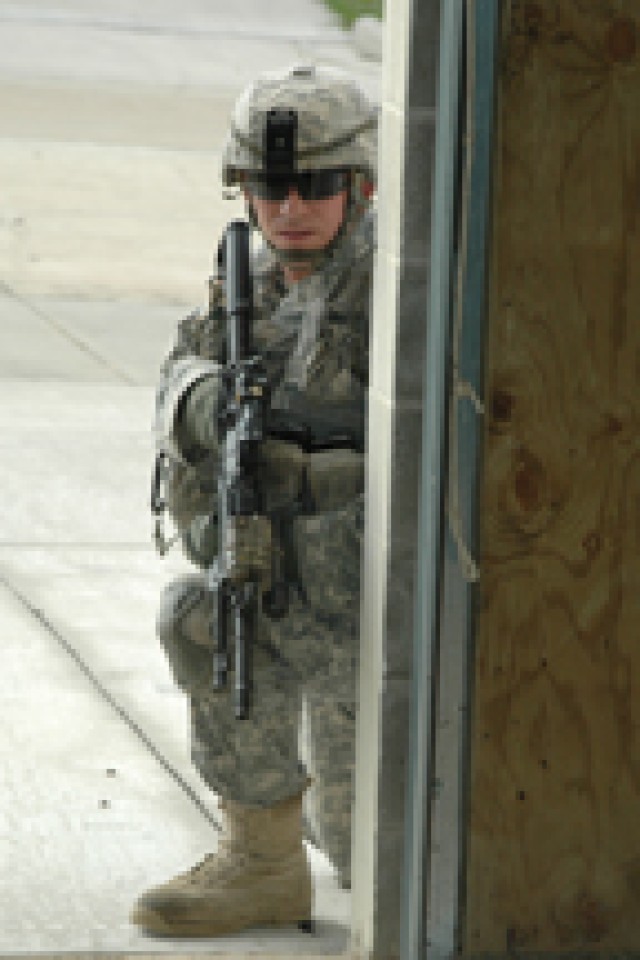FORT POLK, La. -- Preparing for an upcoming deployment to Afghanistan later this year, the 4th Brigade Combat Team, 10th Mountain Division infantrymen conducted counter-insurgency, or COIN, training at Fort Polk training areas April 7 and 21.
Soldiers from Company B, 2nd Battalion, 4th Infantry Regiment, trained at the Combined Arms Collective Training Facility April 7, and Company A conducted their COIN training at Rosepine II training area April 21.
Patriot Brigade leaders understand that their mission encompasses gaining public support from Afghan villagers and village elders. "Warrior Battalion" Soldiers of 2nd Bn, 4th Inf Reg are training to do just that.
During Company B's COIN training, 2nd Platoon Soldiers portrayed local Afghan villagers and Afghan National Police officers. Even though the Soldiers knew their comrades were roleplaying, they took the interactions seriously.
"We showed them (ANP roleplayers) how to clear buildings," said Spc. Calvin Helms, Company B. "They served as our escorts and interpreters for talking to the local villagers."
While clearing buildings, the platoon suffered a "casualty" after walking into an enemy-guarded weapons cache. In addition to handling a casualty situation, Soldiers kept on their toes and heightened their situational awareness while traversing through a "dangerous" place.
The Soldiers took note of the villagers and where they lived. This assisted the Warrior Battalion Soldiers in obtaining knowledge and intelligence concerning who helps coalition Soldiers and gave them an understanding of who might or might not tell them the truth.
Company A Soldiers used the HIIDE (Handheld Interagency Identity Detection Equipment) system to assist them with accomplishing this mission during the COIN training scenario.
"The HIIDE System is a mobile human tracking device," said Pfc. Leonard Hamilton, Company A. The villagers input their personal identification data via thumbprints. Also, the Soldiers used HIIDE to electronically photograph the villagers' faces. The data is gathered and stored in a computer database that can be accessed anytime an individual of interest is fingerprinted or photographed at a later date.
The 2nd Bn, 4th Inf Reg Soldiers understand the importance of sharing their military knowledge, experience and expertise with Afghan police forces. "We brought them (ANP) into our (house) searches to give them the knowledge to do this again," said Staff Sgt. Corey Henderson, team leader. "(This will) help them stand up on their own."
The interaction with "Afghan" villagers showed the Soldiers it takes time and knowledge to gain trust and gather information from village elders and local villagers.
"We tried to befriend them, talk to them (villagers) to see what they need," said Pvt. Jeff Cardoza of Company B. "We asked them about the water, sewage, education, electricity (and more)."
The COIN training was similar to lessons learned during the unit's month-long exercise in Utah in February and March.
While a lot of the information they are getting now is the same as with previous training, leaders inserted new scenarios to keep Soldiers from getting complacent. There is a noticeable progression in Soldiers' knowledge and the fluidity of the training.
"COIN (training) shows there are always variables that change the mission," said Ferraro. "We have to get used to different situations."






Social Sharing